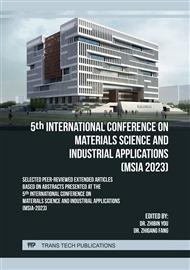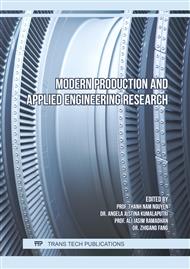p.97
p.105
p.117
p.129
p.141
p.151
p.163
p.175
p.181
Discussion on Fatigue Life Analysis Methods for Connecting Bolts of the Top Cover of Water Pump Turbines
Abstract:
Under the joint action of dynamic and static loads, the connecting bolts of the top cover of the pump turbine are prone to cumulative damage in local areas such as threads, resulting in cracks or development, and fatigue fracture may occur in severe cases, which will cause serious safety accidents. Therefore, it is necessary to carry out accurate fatigue life estimation analysis for connecting bolts, which has always been a hot spot and difficulty in the industry. This paper introduces several commonly used fatigue life analysis methods of parts, combined with the force characteristics and structural characteristics of the connecting bolts of the top cover, and analyzes and discusses the fatigue life analysis methods suitable for the top cover bolts. Finally, it is believed that the application of stress-strain field strength method can better describe the actual state of the bolt danger area, and the current damage state has an influence on the amount of damage generated by further loading, and the fatigue life analysis of connecting bolts can be combined with the stress-strain field strength method and variable damage linear cumulative damage theory, and the fatigue life and residual fatigue life can be estimated in the design stage or after the phased service of the bolt.
Info:
Periodical:
Pages:
181-190
Citation:
Online since:
May 2023
Authors:
Price:
Сopyright:
© 2023 Trans Tech Publications Ltd. All Rights Reserved
Share:
Citation:



